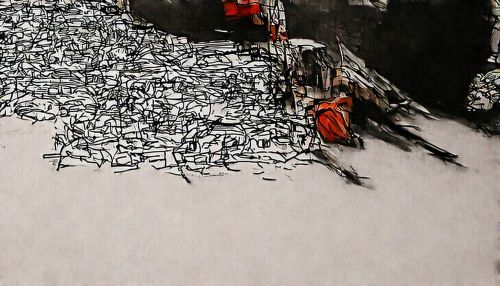Editorial Cartoons
Overview
Editorial cartoons, also known as political cartoons, are illustrations or comic strips containing a political or social message that usually relates to current events or personalities. Editorial cartoons are a significant part of history, reflecting different periods' social and political landscapes. They are a primary source of information, offering a satirical and often humorous perspective on the issues of the day.
History
The history of editorial cartoons dates back to the early 18th century in Europe, where they were used as a means of political and social commentary. The first modern political cartoon, a caricature of John Wilkes by William Hogarth, was published in 1754 in England. In the United States, Benjamin Franklin's "Join, or Die" cartoon, published in 1754, is considered one of the first significant editorial cartoons.
18th and 19th Centuries
During the 18th and 19th centuries, editorial cartoons became a popular medium for expressing political and social views. They were often used to criticize political leaders and policies, and they played a significant role in shaping public opinion. Some of the most notable cartoonists of this era include Thomas Nast, who is often referred to as the "Father of the American Cartoon," and Honore Daumier, a French cartoonist known for his satirical caricatures of French politics and society.
20th Century
The 20th century saw the rise of new forms of media, but editorial cartoons remained a vital part of political discourse. During both World Wars, editorial cartoons were used to convey propaganda and shape public opinion. In the latter half of the century, cartoons became a tool for civil rights activists, anti-war protesters, and other social movements. Some of the most influential cartoonists of the 20th century include Herblock, who coined the term "McCarthyism," and Bill Mauldin, known for his World War II cartoons.
Characteristics
Editorial cartoons are characterized by their satirical and often humorous nature. They use symbolism, exaggeration, labeling, analogy, and irony to convey their message. They often feature public figures and use current events as their subject matter. While they are primarily a form of entertainment, they also serve a crucial role in political discourse, often providing a unique perspective on complex issues.
Symbolism
Symbolism is a key element in editorial cartoons. Cartoonists use symbols to represent larger concepts or ideas. For example, a cartoonist might use a lion to represent courage or a dove to symbolize peace. Symbols can also be specific to a particular country or culture. For example, the bald eagle is often used to represent the United States, while the bear is commonly used to symbolize Russia.
Exaggeration
Exaggeration is another common technique used in editorial cartoons. Cartoonists often exaggerate the physical features of public figures to make them easily recognizable. They also exaggerate situations to highlight their absurdity or to make a point more forcefully.
Labeling
Cartoonists often use labeling to make their message clear. They may label a person or object in the cartoon to ensure that the viewer understands what it represents. This technique is particularly useful when the symbol used might not be immediately recognizable to the viewer.
Analogy
Analogies are often used in editorial cartoons to draw comparisons between two unrelated situations. This technique can help to highlight the similarities between the two situations and make a complex issue more understandable.
Irony
Irony is a common element in editorial cartoons. Cartoonists often use irony to highlight the discrepancy between what is expected and what actually happens. This can be a powerful tool for criticizing political leaders or policies.
Impact
Editorial cartoons have a significant impact on society. They have the power to shape public opinion and influence political discourse. They can highlight issues that might otherwise be overlooked and provide a unique perspective on current events. They also serve as a historical record, reflecting the social and political climate of different periods.
Criticism
Editorial cartoons have been subject to criticism. Some argue that they oversimplify complex issues, reducing them to a single image or punchline. Others contend that they can be offensive or insensitive, particularly when dealing with sensitive topics. Despite these criticisms, editorial cartoons remain a vital part of political and social discourse.
See Also


